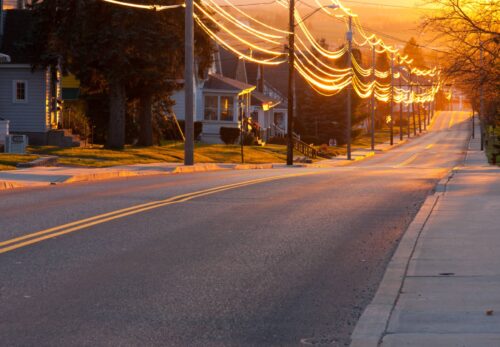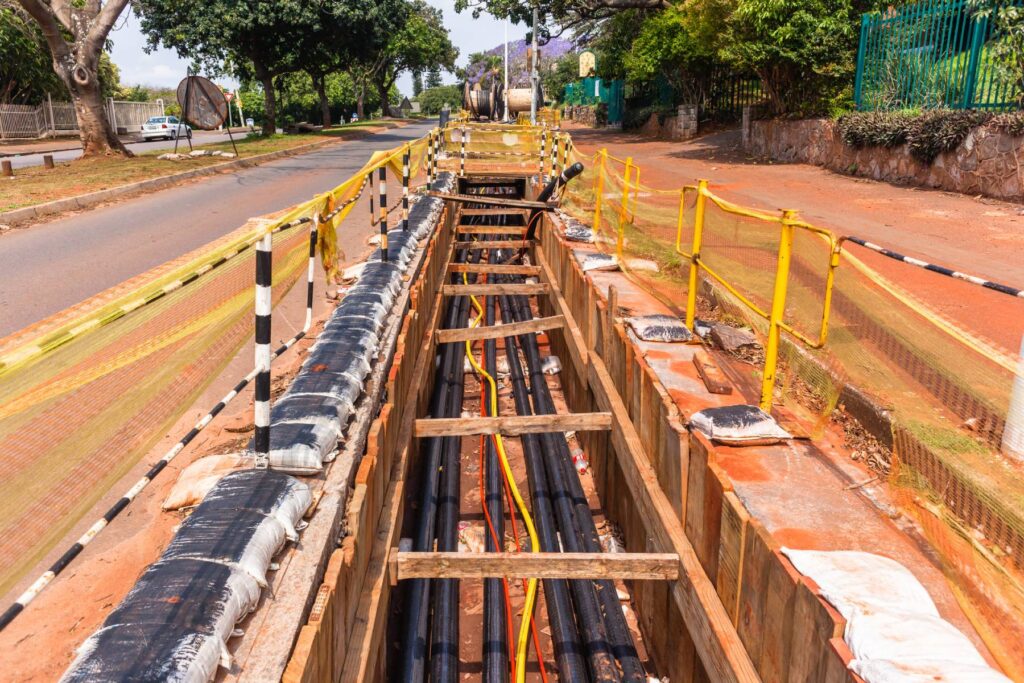
Bringing Cities and Their Utilities into the 21st Century
How Cities Can Renegotiate Franchise Agreements for the Clean Energy Transition
You wouldn’t rely on a 30-year-old contract with your phone or internet provider. Times change, and so do the conditions under which a contract was signed. Yet that is exactly what many cities do with their electric and gas utilities. A franchise agreement is a contract between a city or county and its utility that lays out how the utility can operate on public property. Many of these contracts are decades old, written in a vastly different world than today when climate change was less of a concern.
Fortunately, local governments across 30 states can negotiate their franchise agreements. Cities large and small are using this ability to decrease the contract length, which can be beneficial given the rapidly evolving energy landscape. However, a shorter contract should not be the core objective; rather, cities should consider length as a function of what they are trying to achieve.
Through the American Cities Climate Challenge Renewables Accelerator, RMI has helped cities reconsider their franchise agreements in the realities of today’s world. With each negotiation, cities have an opportunity to partner with their utility to further align on climate, equity, and resilience goals and actions. Here are five suggestions for municipalities that want to leverage their franchise agreements renegotiations to advance community-wide goals.
1. Incorporate Climate Strategies
Most franchise agreements have historically been legally narrow in scope, focused on contract fees and public infrastructure access. But that scope is slowly expanding to include climate considerations. Chicago was one of the first cities to incorporate energy efficiency into its franchise agreement in 1991. However, as cities try to incorporate climate considerations into franchise agreements, they often face resistance from utilities.
One strategy is for cities to develop a parallel agreement on climate-related goals. Better yet, incorporate specific actions for the utility to take as a contract requirement. For example, Minneapolis signed a parallel agreement with its two utilities, Xcel Energy and CenterPoint Energy, to help the City reach its Climate Action Plan and Energy Vision for 2040 goals. Xcel and Minneapolis now meet with their community advisory board four times a year to discuss steps to reach the city’s goal of reducing 80 percent of greenhouse gas emissions by 2050. Salt Lake City signed a similar agreement with its utility, Rocky Mountain Power. Such agreements lead to greater collaboration and dialogue with the utility to promote concrete actions each party can take to reduce emissions.
2. Plan for an Equitable Future
Incorporating investments in climate equity into franchise agreements is also an option. San Diego recently signed a new franchise agreement with its utility, San Diego Gas & Electric, in which they agreed to two climate equity-related financial commitments: $20 million for a climate equity fund and $10 million for programs to increase access to solar and rebates to historically underserved communities. The funding is particularly notable in that it is from shareholder funds, not ratepayer funds—a critical distinction to ensure that the costs aren’t just passed through to customers.
3. Invest in Resilient Infrastructure Before Disaster Strikes
Today, the need to build and strengthen our electricity grid for resilience to extreme weather is more important than ever. Franchise agreements can be a vehicle for that. Starting in the early 2000s, Colorado municipalities began stipulating in franchise agreements that utilities allocate annual funding to “underground” all the overhead powerlines within city limits. Undergrounding powerlines makes them less vulnerable to strong winds, ice, and extreme temperatures, decreasing fire risk and power outages. In 2006, Denver became the largest city to include this requirement. Since then, every municipality served by an investor-owned utility within the state has included the same requirement, following Denver’s lead.
Although undergrounding and updating equipment may seem expensive upfront, it is a mutually beneficial, cost-effective investment for communities and utilities alike, as any utility impacted by extreme weather and wildfires can attest. Following the devastating fires in Northern California in 2019, PG&E paid $25.5 billion for fire-related liabilities. The cause of these fires? Outdated equipment due to PG&E spending $93 million less than it was authorized to on capital upgrades between 1997 and 2000. In 2021, PG&E announced it would bury 10,000 miles of overhead lines in extreme zones of fire risk in an effort to minimize wildfire risk and improve infrastructure resilience.

4. Embrace Collaboration and Community Engagement
Utilities are always preparing for the future, and many have innovation teams of their own. Don’t assume that this negotiation must be conducted solely by a team of lawyers and accountants; invite innovation and technology managers from your utility to the table to discuss vehicle and building electrification, efficiency, community solar, and microgrids. Cities don’t have to have all the answers, but strategically engaging with your utility can help co-create solutions. Consider building a negotiating team that includes utility program experts and city officials to identify new solutions that could be applied or pilot programs that could be deployed to support a cleaner, more resilient, and more equitable energy future.
Public pressure can also be an influential force for shaping program design. Consider this an opportunity to co-host public briefings with your utility to discuss community goals—and, most importantly, include community members and local organizations in this process. Ultimately, your residents and businesses are the utility’s customers: the less willing utilities are to meet the community’s energy needs of today and tomorrow, the less support they will have from their customers.
5. Understand Your Leverage
Cities are often at a disadvantage in negotiations due to a lack of institutional knowledge on franchise negotiations. While utilities may negotiate several franchise agreements per year, individual cities historically only do so every few decades. This creates an informational asymmetry, so cities should consider the following fundamental strategies:
- Clearly research your city’s prior process, document your city’s current efforts and lessons learned along the way, and engage with your peer cities in advance to reduce knowledge gaps in future negotiations—be it 5 years, 10 years, or longer.
- Understand how valuable the franchise is to the utility (and its shareholders). For instance, for its 2020–2021 renegotiation, San Diego assessed the value of its electric and gas infrastructure, estimated that a new 20-year contract would be worth approximately $6.4 billion, and solicited competitive bids for its new franchise agreement with a minimum bid amount of $70 million. This made the opportunity tangible and put climate and equity requests in perspective.
Additionally, cities must recognize that electrification trends will bolster electric utilities with increased demand and additional customers from electric vehicles. The flipside is that this already has gas utilities existentially worried about their business model and customer base. This pressure could increase the likelihood that cities and gas utilities can deploy innovative solutions to reduce emissions such as district heating and cooling or heating-as-a-service models.
Lastly, municipalization—creating a public utility—is an increasingly popular consideration when negotiations begin. However, given the infrastructure costs and legal process involved, municipalization is rarely a salient threat on its own. Even the City of Boulder ultimately declined to proceed after a decade of debate. Unless the city is either large enough to threaten the utility’s bottom line or could ignite a trend among the utility’s other customers, municipalization is neither a proven pathway for success nor the leverage that cities may think it is.
There’s No Time Like the Present
Breaking down perceived barriers to adding climate, equity, or resilience programs to franchise agreements does not happen overnight. In fact, Chicago has been actively renegotiating a new agreement since 2020, seeking enhanced climate and equity commitments. As shown in the map below, at least 21 major cities (100,000+ population) across the country have franchise agreements expiring or up for renewal by 2030. These cities should embrace this opportunity now—and plan for renegotiation years in advance.
For additional guidance on how to effectively engage with your utility, check out our City Renewable Accelerator’s “Engagement Guidance.”